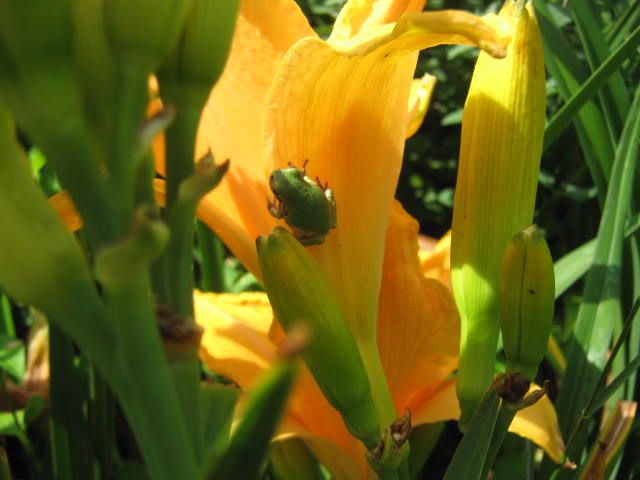Our garden has become a haven for baby tree frogs. Standing in one spot without having to move, I could see three of them. I’ve also seen many others hopping around in the yard.
Tree frogs need water to reproduce, either permanent ponds or temporary pools of water. This wet summer with all of its rain has left a lot of standing water around. Some areas around here have had water standing for a couple of months, long enough for tree frogs to lay eggs, hatch into tadpoles and develop into frogs.
Like other frogs, they eat all sorts of insects which makes them helpful in the garden.
They’re so much fun to watch too. Tree frogs blend in so well with their surroundings that it is hard to find them in their natural habitat up in the trees. They can surprise you by showing up in the most unusual places.
Many of us have seen them resting on windows or stuck on the side of a building. One time I was happily surprised by one sitting on an apple I was about to pick.
Adult tree frogs are about two inches long, ours are a little over half an inch right now. They range in color from gray, brown or green depending on their circumstances.
It seems like tree frogs are loudest frogs we have around here. Their call is distinctive and carries quite a distance. Like bird songs, you can learn to identify them by their call even if you can’t see them.
Bob


